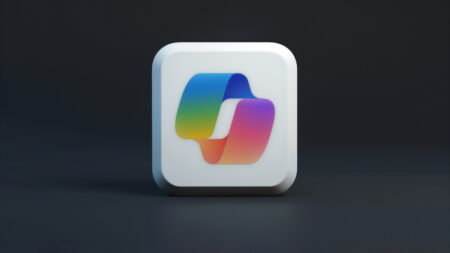Elevated digital expectations to persist well beyond the pandemic
Throughout the pandemic, people became more reliant on digital experiences than ever before. From food delivery to video calls, software applications empowered users with a sense of normality. They helped businesses innovate throughout demanding times. With so many applications now touching every aspect of our psyche, the screen has become nearly impossible to leave behind. In fact, 85% of people say applications and digital services have become an intrinsic part of their daily lives.
The new digital normal is here to stay. But, this new reliance comes with a tremendous repercussion for software maintainers. User expectation has reached all-time highs. New findings from AppDynamics show that apps only have one shot at making a quality impression for most users. In our accelerating digital market, issues will instantly turn off prospective users and influence them to look elsewhere for their fix. For example, buggy applications, slow load times, or poor connections are discouraging for users.
The App Attention Index 2021, a new report released by AppDynamics, examined how our reliance on digital experiences intensified since the start of 2020. Below, I’ll explore the major points from the report and consider the global technology market implications. The big takeaway is this:
– High standards for applications aren’t going away –
As virus alarms quell and regulations subside, our new dependence on digital services will undoubtedly remain.
Digital Experiences Offered Normality for Daily Life
The uncertainty of the last year and a half disrupted most of our typical routines. Thankfully, the wealth of applications provided a welcome reassurance that many activities would continue remotely. 75% say applications and digital services have been a lifeline to some kind of normality during the pandemic.
In the course of social distancing, technology use soared as in-person behaviors shifted online. In the process, users adopted a staggering number of new applications. These apps enable daily activities, like grocery ordering, doctor appointments, fitness classes, education, and remote work. In comparison to two years ago, users are, impressively, using 30% more applications on a daily basis.
Tools for connecting with friends and family, entertainment, news and information, and food devlivery services experienced the most significant increase in use. Digital services have helped people of all ages and creeds cope under times of stress. They fulfill social needs and enable connections with loved ones. As a result, 84% of users reported that digital services positively impacted their lives throughout the pandemic.
Applications Are A Critical Lifeline For Majority of Users
Digital services not only make typical routines more accessible, but they also offer the convenience of working around other commitments. Consider how Zoom calls and online conferences have supplanted time-draining in-person meetups. Many workers are now accustomed to this remote asynchronous lifestyle. In fact, 85% of people say applications and digital services have become a critical part of how they go about their daily lives. As I’ve previously covered, new technological tools are empowering the knowledge worker of the future with unparalleled creative potential.
Research also shows that consumers recognize the efforts brands take to remain digitally savvy, especially during times of uncertainty. 72% of people say they are grateful for brands that have invested in digital alternatives during the pandemic. And, 67% say some brands have gone above and beyond with the quality of their digital service. For example, by innovating same-day pickup procedures and investing in online ordering, corporate chains like Target and Walmart were able to sustain and grow business.
Digital Apps Only Have One Shot to Deliver
Although consumers are grateful for newfound technological alternatives, simply “switching to digital” is not enough to appease the modern user. The new quality standard is much more elevated than in previous years. Users have come to expect nothing short of a fully functional, impeccably designed, personalized experience that delivers instantaneous results. As the study found, 57% of consumers say brands have one shot to impress them, or else they will turn to other services.
Expectations around reliability and performance, information security, and customer loyalty were the most significant categories to skyrocket since the beginning of 2020. Naturally, 76% of people say their expectations of digital services have increased during the same period. Users now expect more innovation, personalization, engagement, and reliability than ever before.
Yet, not all applications are reaching these high targets. Issues with new digital tools are numerous. 83% of digital consumers have encountered problems with their applications in the past 12 months. Things like slow load time, poor connectivity, crashes, or slow streaming are the events that are mostly likely to turn off prospective users. When encountering a snag, users will most commonly try to switch to an alternative service, contact support, or tell others about their negative experience. While the way users respond has stayed the same since pre-pandemic times, the rise in application usage has likely increased the number of issues.
The ‘New Normal’ Is Here To Stay
The digital dependence established by COVID–19 will have major repercussions for years to come. It has accelerated existing digital transformation initiatives across the board, spurring technological laggards to adopt new, often remote, ways to meet customer demand. As the data demonstrates, the innovation developed within this time frame will have staying power. 88% of people expect their reliance on digital services to remain the same or increase over the next 12 months.
The ‘new normal’ positively affects a broad range of age groups. Interestingly, the digital necessity is breaking down age barriers to technological adoption. This has led to encouraging older generations to try out new apps. On the whole, 81% state that the availability of digital services has enabled them to try new things that they wouldn’t have done before.
Just as new digital reliances will outlive the pandemic, standards for digital experiences will remain intensified as well. The report found that 61% of people state their expectation of digital services has changed forever, and they won’t tolerate poor performance anymore. Knowing these realities, some ideas to improve digital applications include:
- Continuously monitor applications for faults.
- Prioritize application bugs and make quick fixes to reduce Mean Time to Recovery (MTR).
- Work to deliver frictionless experiences with high-quality design.
- Monitor the entire stack to track, observing non-functional business outcomes as well, known as Full-Stack Observability (FSO).
Conducted in June 2021, The App Attention Index 2021 report surveyed 13,000 digital consumers worldwide on their digital experiences throughout the pandemic. To find more insights, you can view the report in its entirety here.






